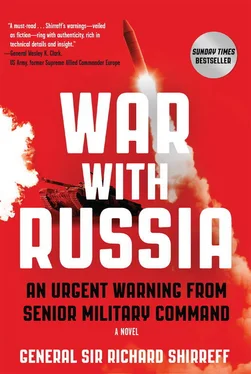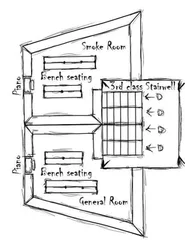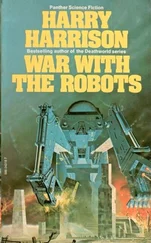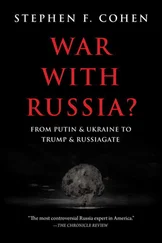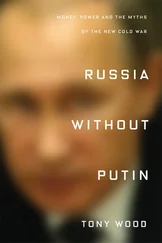“And that is?” asked Howard.
“If it’s an uncoordinated free-for-all up there, which it could be if Rasputin lives up to its name, then the Russians may not dare put their own planes into the air in case they get shot down by their own batteries.”
“That I like!” exclaimed McKinlay. GCHQ had not briefed him on that possibility.
Howard only nodded. “That would be an unexpected bonus. But if Rasputin doesn’t work, then we’ll implement the contingency plan?”
“We’re ready for that, SACEUR. It’ll be a conventional and potentially very attritional campaign. Air Com has a contingency air-tasking order that assumes it will take thirty-six hours to neutralize the Russian Integrated S-400 Air Defense system. When that’s been achieved… or not, it’ll be your call. If it’s looking good, it’ll be a case of reinforcing success by letting the Allied Rapid Reaction Corps loose into southern Lithuania and going ahead with the 2nd Marine Expeditionary Force landing in Estonia. If not, you can mission-abort at any stage and let the politicians start talking.”
The room was silent. The prospect of mission failure was too grim to contemplate.
“And it could get far worse,” interrupted McKinlay. “There’s a high chance that the Russians will go nuclear.”
“I’ve talked to Washington about that, Dave,” replied Howard. “The US has now moved to DEFCON 1. That’s ready for nuclear release. They’ll be making it very clear to Moscow through diplomatic channels that any recourse to nuclear, even battlefield, tactical weapons, will result in the launch of US ICBMs—which would mean the total destruction of several Russian cities for starters. The President has also talked to the Brits and the French, who have reduced notice to fire for their submarine-launched ICBMs to fifteen minutes. They’ve commenced targeting and prepared launch codes. We’re looking MAD, mutually assured destruction, in the face.”
“Do you really mean that, SACEUR? Will President Dillon really put US cities in the firing line?”
Howard reflected for a moment before speaking quietly. “Everything I’ve seen of President Dillon tells me she is serious about this and won’t blink first. She realizes only too well that if she hesitates today, chances are that she’ll face the same problem tomorrow. But next time without NATO to support her. She’s a very different animal to the last President and we’ve got to make sure the Russians understand that.”
“That makes Rasputin critical,” commented McKinlay. “If it fails, it’s either mission abort or we’re into a bloody conventional fight with the near guarantee of nuclear exchange… There’s a lot hanging on the shoulders of that young woman at GCHQ and her geeky mates.”
“Let’s move on. Skip, take me back to your comfort zone,” said Howard. “Even strategic commanders occasionally need to get into the tactical detail when there’s so much hanging on it. I’d like to go through the op to secure the nuclear command bunker at Pravdinsk again. After all, that’s the fulcrum on which everything else hangs.” It was time to be positive.
“As you know, SACEUR, the air assault will be preceded by a twelve-man ODA from the 1st Battalion, 10th Special Forces Group, based in Stuttgart. They’re being inserted covertly by HAHO parachute drop, ahead of the main heliborne force. They’re good to go on your final order.
“The Brit team which infiltrated in from Lithuania—the guys who’ve been working with the Forest Brothers—are waiting for them right now. Once they’ve joined up they’ll be the pathfinders for the main air assault. They’re also trained to immobilize the C2 circuitry of the Iskander nuclear-missile batteries once we’ve broken through the defenses and suppressed the compounds.”
“And then?”
“This slide shows a satellite photo of the compound south of Pravdinsk.” At this point Williams pointed out the ground: the small town of Pravdinsk and, four miles to its south, the compound with the nuclear command and control bunker. Next he pointed to the forest line to the north, with the open ground to the north of that selected as the LZ, the helicopter landing zone.
He flicked on a second slide, next to the photo, and continued, “These are the Special Forces Component Commander’s phases for the operation. Phase One is when the Special Forces ODA arrive on the LZ. Rasputin will be activated on DSACEUR’s call at 0100 hours, Kaliningrad time. That will trigger Phase Two, the air battle to suppress the Russian Integrated Air Defense System. Assuming Rasputin takes down their C2 that will give the ODAs two and a half hours before Phase Three, the air assault, starts at 0330, local Kaliningrad time. Obviously, if Rasputin does not work, we will not send in a heliborne assault anywhere near the Russian air defenses. It would be a massacre.”
“Two and a half hours between Rasputin going live and the helicopters landing?” queried Howard. “Surely it needs to be a lot tighter than that?”
“Ideally yes, SACEUR,” replied Williams, “but we have to take account of the inevitable friction of war. During that time the air forces have to neutralize the SAM sites, so they don’t take out the airborne on their way in. And that’s assuming Rasputin has worked.”
“Skip’s right, SACEUR,” interjected McKinlay. “That’s the reality.”
“Got it,” replied Howard. “What happens when the airborne land?”
“The ODA will be followed by a beefed-up air-assault company. One for each of the three Iskander sites. The land component commander has had to make some compromises here: ideally he would want at least a three-to-one advantage over the defenders, which means at least a battalion task force. However, putting a battalion on the ground so close to the enemy is asking for trouble. He’s therefore decided to reduce the air-assault landing force to an extra-strong, reinforced company group, but to give them plenty of air support to keep enemy heads down during their assault on the compound. We’re also confident that the air strikes will be so precise that they will not risk setting off the Iskanders.
“The other issue at Pravdinsk is a minefield, probably anti-personnel only, which the Brit team have identified next to the perimeter wire and is covered by fire from the watchtowers. However, they’ve also identified a route through. Their job, once they’ve marked the LZ, is to guide the air-assault company right to the wire. Once they’re in, they’ll have engineers prep the site for demolition, in case it looks as if the Russians are getting their missiles back on line, or it looks as if we are going to be overrun. While they’re doing that, the ODA will be physically disabling the circuitry inside.”
“And the other sites at Yuzhny and Ozyorsk?” queried Howard.
“Effectively the same concept of operations,” replied Williams. “Although we’ve had good intel from other Forest Brother groups, it hasn’t been to the same level as the Brits have provided. There may be minefields. We just don’t know. If there are, and we’re assuming there are, then we’ll have to clear them. But Pravdinsk is the key to the plan as command and control to the other two sites is routed through there.
“So, once in, they’ll disable the nukes at all the sites. My last point is that they’ll then prepare for follow-up air-assault landings by 82nd Airborne at each site. At Pravdinsk we reckon we can build up a brigade on the ground within around six hours. That is more quickly than the Russians can launch an effective, coordinated, multi-brigade counter-attack. Any immediate and localized counter-attacks we’re confident can be dealt with from the air. When the Russians realize what’s happening and get their act together, they’ll come at us with everything they’ve got. Unless, of course, us seizing the nukes persuades the Kremlin to back off. Which is what we are banking on happening.”
Читать дальше
